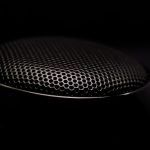KHALED DESOUKI/AFP/GETTY
- Over the last four months, archaeologists have found at least 210 sarcophagi beneath Saqqara, an ancient Egyptian city of the dead.
- The sealed coffins had remained undisturbed for 2,500 years or more. Egyptologists recently opened some to examine the mummies inside.
- Researchers also discovered an ancient queen’s funerary temple and a trove of mummified lion cubs and cats at Saqqara.
- Visit Business Insider’s homepage for more stories.
More than two millennia ago, ancient Egyptians were laid to rest in Saqqara, an ancient city of the dead. Their organs were removed, and their bodies wrapped in linens. Priests placed them inside coffins adorned with intricate hieroglyphics.
The mummies stayed buried in those sarcophagi for thousands of years – until their recent discovery by Egyptian archaeologists. In the last four months, researchers have discovered a trove of at least 210 coffins entombed deep within shafts below the Saqqara sand.
Egypt’s Ministry of Tourism and Antiquities announced the most recent finding on Sunday: 52 burial shafts containing more than 50 wooden coffins that are estimated to be 3,000 years old. The sarcophagi brought the total number of human coffins found since September from at least 160 to 210 or more.
The sarcophagi were “completely closed and haven’t been opened since they were buried,” according to the ministry. Egyptologists have opened a few of them to analyze and display the mummies inside.
KHALED DESOUKI/AFP/GETTY
The photos below show how archaeologists found the coffins and other artifacts buried beneath Saqqara.
KHALED DESOUKI/AFP/GETTY
“The Book of the Dead” is an ancient manuscript that guides souls through the afterlife.
In one of the burial shafts, alongside the coffins, archaeologists discovered a 13-foot-long, 3-foot-wide papyrus scroll. It contained an excerpt from the “Book of the Dead.”
KHALED DESOUKI/AFP/GETTY
The archaeologists also discovered artifacts in the shafts, including a bronze axe from a leader of a pharaoh’s army, bird-shaped sculptures, a limestone tableau, and a set of ancient board games.
This new discovery marks the first time 3,000-year-old sarcophagi have been found at Saqqara, according to the ministry.
KHALED DESOUKI/AFP/GETTY
The 50 coffins are roughly 500 years older than the most ancient sarcophagi previously found in the city.
The coffins’ age confirms that Egyptians buried their dead in Saqqara during the New Kingdom era, between the 16th and the 11th centuries BCE. That’s far earlier than Egyptologists initially thought.
KHALED DESOUKI/AFP/GETTY
The discovery will “rewrite the history of this region,” Zahi Hawass, head of the Saqqara archaeological mission, said in a statement.
Most of the coffins found at Saqqara are about 2,500 years old. Mostafa Waziri, the general director of Egypt’s Supreme Council of Antiquities, unveiled at least 100 such sarcophagi in November.
Ziad Ahmed/NurPhoto via Getty
That added to the total of 59 Saqqara coffins that had been found in September and October.
Archaeologists picked one sarcophagus to open live in front of an audience at a small event on November 14.
Kyodo News via Getty
Then they conducted an immediate, real-time X-ray of the mummy inside.
The live X-ray event showed the mummy was a male with perfect teeth who was between 5-foot-4 and 5-foot-7.
Mohammed Fouad/picture alliance via Getty
He was buried with his arms crossed over his chest — a position, Waziri said, that symbolizes royalty.
“Very rich, elite, high ranked people” owned some of the Saqqara coffins, Waziri told NBC News.
Fadel Dawood/picture alliance via Getty
Many of the Saqqara coffins were “well-gilded, well-painted, well-decorated,” he said.
November wasn’t the first time that archaeologists publicly opened a coffin: Egyptian officials also opened one on stage in an October press conference.
Kyodo News via Getty
The November 14 event was, however, was the first time researchers had X-rayed the mummy inside.
In November, archaeologists also unearthed more than 40 artifacts in three burial shafts, according to Khaled El-Enany, Egypt’s minister of tourism and antiquities.
Mohammed Fouad/picture alliance via Getty
These included gilded statues and funerary masks. El-Enany said the artifacts and coffins will be distributed to three museums in Cairo for display.
Those artifacts are merely a fraction of the items found in a string of discoveries at Saqqara.
Ministry of Tourism and Antiquities Egypt
El-Enany announced in September that a set of 13 sarcophagi had been found at the bottom of a 36-foot-deep shaft.
He said on Twitter that finding that first coffin cache was “an indescribable feeling.”
—Khaled El-Enany (@KhaledElEnany6) September 6, 2020
The shaft had three offshoots branching away from it, so El-Enany predicted at the time that more undiscovered sarcophagi were likely still buried in the shaft. He was right.
Two weeks later, the ministry announced that archaeologists had found 14 more sarcophagi. That brought the total to 27.
Ministry of Tourism and Antiquities Egypt
In a statement on Facebook, Egypt’s Ministry of Tourism and Antiquities said the finding is “the largest number of coffins with one burial” discovered since a group of 30 coffins were unearthed at Al-Assasif cemetery in Luxor the prior year.
Archaeologists kept finding more sarcophagi in the weeks that followed. On October 3, Egypt’s Ministry of Tourism and Antiquities announced the discovery of another 32 coffins.
The Egyptian Ministry of Antiquities/Handout via Reuters
That brought the total to 59.
Despite being buried for 2,500 years or more, most of the Saqqara sarcophagi have retained a lot of their original paint and hieroglyphics.
The Egyptian Ministry of Antiquities/Handout via Reuters
With the exception of the handful of coffins opened by Egyptian officials and archaeologists, the coffins have been sealed since their burial.
The identities of the people inside the sarcophagi “have not been determined,” the ministry said in September. But Waziri said the X-rayed mummy was likely someone wealthy.
The Egyptian Ministry of Antiquities/Handout via Reuters
The coffins were mostly found stacked on top of each other in various burial shafts.
Archaeologists have uncovered troves of artifacts in almost every burial shaft they’ve excavated.
The Egyptian Ministry of Antiquities/Handout via Reuters
In September, they uncovered a wooden obelisk just over a foot tall that’s adorned with paintings of Egyptian gods and goddesses, CNN reported.
The ancient Egyptians buried their dead in Saqqara – which is 20 miles south of Cairo in the Western Desert – for some 3,000 years.
Oliver Weiken/Picture Alliance / Getty
Saqqara was the necropolis, or city of the dead, for the ancient capital of Memphis. Its name likely derives from Sokar, the Memphite god of the dead.
Not all Egyptians were buried under the necropolis’s sand: Pharaohs like King Teti and their wives were entombed in pyramids.
KHALED DESOUKI/AFP/GETTY
Archaeologists discovered a pyramid belonging to one of Teti’s wives at Saqqara in 2010, but her name wasn’t mentioned on the walls inside.
That gave rise to a mystery about the ancient woman’s identity — she was an unknown member of Egyptian royalty who ruled more than 4,200 years ago. Egypt’s Ministry of Antiquities announced Sunday that excavators had finally discovered the wife’s identity.
Diggers uncovered a funerary temple near Teti and his wife’s burial pyramids with a name on the wall: Queen Nearit.
“I’d never heard of this queen before. Therefore, we add an important piece to Egyptian history about this queen,” Hawass told CBS News.
Saqqara is home to one of Egypt’s oldest pyramids: the Step Pyramid of Djoser, which was built about 4,600 years ago.
Michel Baret/Gamma-Rapho / Getty
The architect Imhotep built the pyramid to house the remains of King Djoser, an ancient Egyptian pharaoh from the Third Dynasty.
It was the first building ever made of stone, and it paved the way for other pyramids, including the Great Pyramid of Giza.
Another tomb found in Saqqara, this one 4,400 years old, belonged to a royal purification priest who served during the reign of King Nefer-Ir-Ka-Re.
Mohamed el-Shahed / AFP / Getty
Egypt’s Ministry of Tourism and Antiquities announced that finding in 2018.
Researchers also unearthed a huge cache of animal mummies at Saqqara in November 2019.
Khaled Desouki/AFP via Getty
They found two rare mummified lion cubs, as well as mummified birds, crocodiles, cats, cobras, and an enormous mummified scarab beetle.
Ancient Egyptians mummified and buried millions of animals, often treating creatures like hawks, cats, and crocodiles with the same reverence that they would a human corpse.
The mummified lion cubs are about 2,600 years old.
Khaled DesoukiI/AFP via Getty
The cubs were only eight months old when they were mummified. Other mummified wildcats were found alongside the two lions.
It was the first complete mummy of a lion or lion cub ever found in Egypt, according to Waziri.
Khaled DesoukiI/AFP via Getty
The Egyptians believed animals were reincarnations of gods, so they honored them by mummifying the creatures and worshipping these animals in temples. Mummified animals could also serve as offerings to those gods.
Saqqara will likely yield even more discoveries in the coming months.
KHALED DESOUKI/AFP/GETTY
“Actually, this morning we found another shaft,” Hawass told CBS News on Monday. “Inside the shaft we found a large limestone sarcophagus. This is the first time we’ve discovered a limestone sarcophagus inside the shafts. We found another one that we’re going to open a week from now.”
This story has been updated with new information. It was originally published in September 2020.
Powered by WPeMatico






